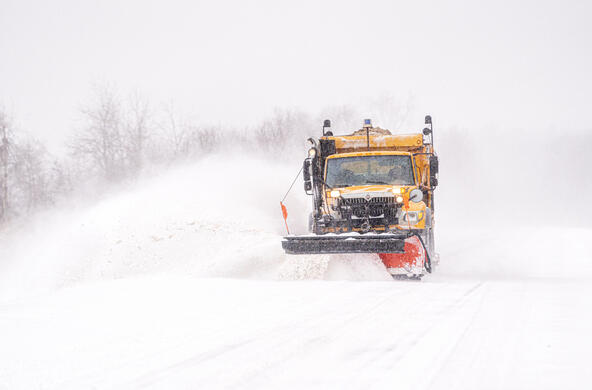North America's freshwaters are getting saltier.
More roads and more road salt – that’s the situation we are in. Since the use of road salt began around the 1940s, we have added more road miles and increased our expectations of travel in winter weather.
15-32 million metric tons of road salt is applied to roadways each year – and much of it washes into nearby water bodies, where it is recognized as a major source of pollution to groundwater, streams, rivers, and lakes.
The problem
- Salt applied to winter roads washes into freshwaters.
- This pollution threatens to harm aquatic life and contaminate wells and reservoirs.
We are working to understand the scope of the problem, to help guide targeted management.
We are exploring...
- Where – and to what degree – freshwaters experience rising salt levels
- How proximity to roads, sidewalks, and parking lots impacts the salinization problem
- What landscape features increase salt inputs into well water
Our discoveries
A study of 371 lakes conducted by researchers in the Global Lake Ecological Observatory Network (GLEON) Graduate Student Fellowship Program, an initiative led by Cary’s Kathleen Weathers, was the first large-scale analysis to capture the extent of rising salt levels in freshwater lakes.
The team looked at chloride levels in lakes and linked these numbers with the amount of impervious ground cover – surfaces like roads and parking lots – around the lakes. They found that even 1% impervious cover around a lake could trigger increasing salinization.
A conservative estimate of the problem: at least 7,770 lakes in the North American Lakes Region – an area that includes Connecticut, Maine, Massachusetts, Michigan, Minnesota, New Hampshire, New York, Ontario, Rhode Island, Vermont, and Wisconsin – are experiencing rising salinity due to road salting.
The group found that salty, alkaline freshwater can release a variety of chemicals, including toxic metals and harmful nitrogen-containing compounds, from stream beds and soils in drainage basins. The results further suggest that many of these chemicals travel together throughout watersheds, forming “chemical cocktails” that can have more devastating effects on drinking water supplies and ecosystems when compared with individual contaminants alone.
Analyses of drinking water wells in East Fishkill, New York found salinity levels were related to proximity to paved surfaces like roads and parking lots.
Salty drinking water is cause for concern, particularly for people on sodium-restricted diets.
Roads and other impervious surfaces adjacent to a lake’s shoreline are a recipe for salinization. We need to manage and monitor lakes to ensure they are kept ‘fresh'.
Kathleen Weathers





